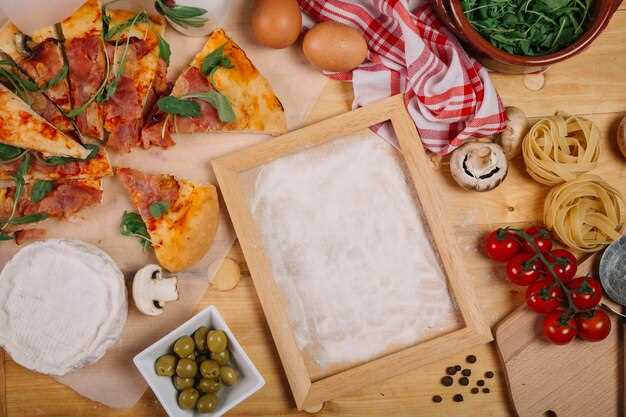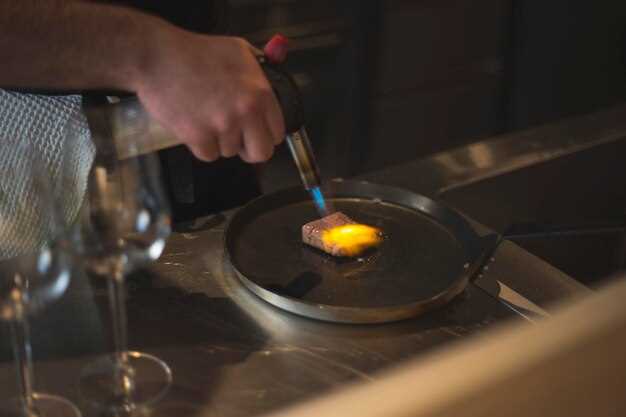If you crave culinary excitement delivered straight to your doorstep, it’s time to subscribe to a cheese, charcuterie, or spice box. Each option offers a unique experience catering to different taste preferences. Ready to tantalize your taste buds? Let’s explore the delicious world of subscription boxes.
Consider a cheese subscription if your primary indulgence involves creamy textures and diverse flavors. Many cheese boxes focus on artisanal selections from small producers, providing a curated experience that elevates every meal. Expect to experience aged cheddars, creamy burratas, and sharp blues–each paired perfectly with tasting notes and suggested wine pairings.
For those drawn more to savory, cured meats, a charcuterie subscription might be the preferred choice. These boxes offer a range of cold cuts like prosciutto, salami, and chorizo, each piece crafted to melt in your mouth. Subscribers can anticipate discovering rare varieties and unique global styles, perfect for impressing guests or enriching personal snacking moments.
Alternatively, a spice subscription is ideal for culinary adventurers eager to enhance their cooking skills. These boxes focus on uncovering rare or difficult-to-find spices that transform home-cooked meals into gourmet experiences. Expect personalized recipes accompanying exotic spices such as garam masala, za’atar, or smoked paprika, encouraging bold new dishes and flavors in your kitchen.
Evaluating the Flavors: Cheese Boxes

For those seeking the most delightful cheese experiences, look into cheese subscription boxes that offer a wide range of authentic flavors sourced from artisanal producers. Begin by exploring boxes that promise a diverse mix of cheeses from different regions, emphasizing local flavors that vary in texture and taste. A well-curated cheese box includes a balance of creamy brie, sharp cheddar, and robust blue cheese, ensuring a comprehensive taste test with each delivery.
Consider brands that detail the origin and production methods of each cheese for a more informed tasting experience. Opt for subscriptions that offer pairing suggestions, enhancing the complexity of your cheese tasting with recommended wines and snacks. This added guidance complements the cheeses, allowing you to appreciate their unique profiles fully.
Additionally, gauge the freshness of offerings by looking for services that provide cheeses at peak condition. Quick shipping options or partnerships with local farms can often ensure this, delivering cheese that retains its intended flavors and textures. Don’t forget to scrutinize reviews and customer feedback, as previous subscribers provide insights into quality and variety that might not be apparent from product descriptions alone.
Finally, investigate the option of customization, allowing you to specify preferences or allergies, which results in a more personalized experience. Cheese lovers with dietary restrictions or specific taste preferences will find this feature invaluable, tailoring their monthly indulgence to suit their palettes. Engaging with specialist cheese boxes not only elevates your culinary adventures but also supports small-scale producers, fostering a sustainable cheese culture.
What Cheese Varieties Are Typically Included?
Indulge in the sublime flavors of Camembert with its creamy texture and earthy notes, making it a delightful companion to fruits and nuts. Cheddar, a perennial favorite, offers a range from mild to sharp, providing a bold taste that pairs beautifully with crackers and cured meats.
Fans of blue cheese will appreciate the rich and pungent Roquefort, enhancing salads or simply enjoyed on its own. For those with a penchant for something mild yet nutty, Gouda serves as an excellent choice, melting gracefully over hot dishes or complemented by sweet jams.
Don’t overlook Brie, with its soft rind and buttery center, perfect for baking or serving with fresh berries. Experiment with the subtle flavors of Havarti, whose creamy slices can be infused with spices for an extra kick.
The vibrant orange Mimolette adds a festive color and nutty aroma, perfect for grating over salads or pastas. Lastly, savor the smoked delicacy of Provolone, which brings a robust dimension to sandwiches and antipasto platters.
Pairing Recommendations with Cheese
Combine a slice of creamy Brie with a crisp glass of Chardonnay to enhance the cheese’s buttery texture. The light, fruity notes in the wine complement the creaminess of the cheese beautifully.
- Blue Cheese & Port: Pair strong blue cheese with a rich, sweet Port. The bold flavors of the cheese meld perfectly with the sweet, full-bodied finish of the wine.
- Cheddar & Apple Slices: Sharp Cheddar balances wonderfully with sweet, juicy apple slices. This classic duo highlights the cheese’s tangy notes while adding a refreshing contrast.
- Goat Cheese & Sauvignon Blanc: Enjoy tangy goat cheese alongside a glass of Sauvignon Blanc. The wine’s acidity contrasts with the cheese’s creaminess, creating a delightful pairing.
- Mozzarella & Tomato: Pair fresh Mozzarella with ripe tomatoes and a drizzle of balsamic glaze. This combination enhances the subtle, milky flavor of the Mozzarella with sweet and tangy notes.
- Parmesan & Sauvignon Blanc: Hard, nutty Parmesan matches well with the grassy notes of Sauvignon Blanc, balancing intensity with fresh aromas.
For an experiential twist, try a cheese fondue with crusty bread. The fondue’s flavors will match a variety of wines, from a light Pinot Grigio to a robust Cabernet Sauvignon, allowing for a tasting adventure. Experiment with nuts and fruits on your cheese plate for added texture and flavor contrasts. Ultimately, your best combinations lie in personal taste exploration.
How Do Cheese Boxes Accommodate Dietary Preferences?
Cheese subscription boxes often provide options for various dietary needs. Many services offer gluten-free cheeses, an ideal choice for individuals with celiac disease or gluten sensitivity. If you’re lactose intolerant, look for cheese boxes featuring hard cheeses like Parmigiano-Reggiano or aged cheddar, which have lower lactose content.
Vegetarians can opt for boxes that exclude animal rennet-based cheeses. Several producers offer vegetarian-friendly options, using microbial or vegetable rennet, clearly labeled for easy selection.
For those adhering to organic or non-GMO preferences, numerous cheese box services curate collections from organic farms, guaranteeing no genetically modified organisms are involved in production.
Dietary accommodations often include nut-free or dairy-alternative cheese selections. Vegan cheese options, crafted from ingredients such as nuts, soy, or coconut, provide an alternative for vegans or those with dairy allergies. Review the option list carefully to ensure it matches your dietary needs.
| Dietary Preference | Cheese Box Options |
|---|---|
| Gluten-Free | Curated gluten-free assortments |
| Lactose Intolerant | Hard cheeses with low lactose |
| Vegetarian | Cheeses with microbial or vegetable rennet |
| Organic/Non-GMO | Selections from certified organic farms |
| Nut-Free/Dairy Alternatives | Vegan cheeses using alternative ingredients |
To cater to individual preferences effectively, communication with the subscription provider is crucial. Many services welcome customization requests, allowing you to specify any unique needs or restrictions directly.
Are Cheese Subscription Boxes Worth the Cost?
Invest in a cheese subscription box if you love exploring diverse cheese varieties without leaving home. Quality often justifies the cost, as many boxes offer carefully curated, artisanal selections. These boxes connect you with local and international cheesemakers, ensuring a unique tasting experience that’s difficult to replicate in stores.
The value improves when considering exclusive selections and access. Subscriptions frequently include rare cheeses not commonly found in local markets. For instance, a box might feature a seasonal raw milk cheese or an award-winning brie from a small French producer.
Another factor is convenience. Subscription boxes eliminate the time spent locating specialty cheeses, presenting a hassle-free way to enjoy gourmet flavors. Plus, these boxes often come with pairing suggestions or accompaniments like crackers and jams, enhancing your tasting experience.
Consider the table below for an overview of the benefits of cheese subscription boxes:
| Benefit | Description |
|---|---|
| Variety | Wide range of cheeses, including rare and artisanal options. |
| Convenience | Direct delivery to your doorstep, saving time and effort. |
| Exclusive Access | Direct connection with international and local cheesemakers. |
| Experience Enhancement | Accompaniments and pairing tips included. |
For the ardent cheese enthusiast, subscription boxes can also serve as an educational tool, expanding knowledge and palate. Each delivery becomes an opportunity to learn about new textures, flavors, and cheese-making traditions.
Ultimately, whether these boxes suit your budget depends on your personal interest and consumption habits. Regular cheese lovers might find immense joy and value, making it a worthwhile splurge.
Exploring Charcuterie and Spice Subscription Options

Make your gatherings unforgettable by opting for a curated charcuterie subscription box. These boxes often include an array of premium cured meats like salami, prosciutto, or chorizo, accompanied by artisanal cheeses, nuts, and dried fruits. If you crave variety, check whether the subscription allows customization, such as gluten-free or vegetarian selections.
Meanwhile, spice subscription boxes present an alluring alternative for culinary explorers. Choose services that offer unique spice blends tailored for different cuisines, complete with recipe cards to inspire creativity in the kitchen. Ongoing subscriptions may allow exploration of global flavors monthly, enabling you to experiment with dishes from India, Mexico, or Morocco without leaving your home.
Both charcuterie and spice subscriptions often provide detailed sourcing information, emphasizing sustainability and ethical farming practices. Look for customer reviews that highlight product freshness and diverse selections. For those mindful of their budget, compare price points and frequency of deliveries. Some services include a one-time trial option to test before committing long-term.
Ultimately, selecting the right subscription depends on your personal taste preferences and culinary curiosity. Whether indulging in gourmet meats or expanding your spice collection, these boxes offer a convenient way to enhance dining experiences and elevate everyday meals.
Understanding the Charcuterie Selection Process
Identify top-quality cured meats by checking their origin and production methods. Seek meats with a documented heritage; for instance, Italian prosciutto or Spanish jamón often have protected designations of origin ensuring quality. Examine the aging process, as meats aged longer typically offer deeper flavors. A 12 to 24-month aging period is common for premium cuts.
Consider the balance of flavors you aim to achieve. Pair mild meats like a silky prosciutto with a stronger selection such as a spicy chorizo. This contrast enhances the tasting experience. Prioritize variety in texture–combine a paper-thin slice of bresaola with a more robust salami to maintain palate interest.
Factor in dietary preferences or restrictions. Include diversity with options like turkey-based salumi for those avoiding pork, or explore plant-based alternatives mimicking traditional flavors for vegetarian guests. Always ensure non-meat options are clearly labeled to avoid confusion.
Remember presentation plays a crucial role. Skillfully arrange the meats, alternating colors and shapes to create visual appeal. Slice meats just before serving to preserve their texture and aromas. Add accompaniments like olives or nuts to elevate the board’s look and taste.
Regularly update your charcuterie collection by trying specialty products from artisanal producers. This keeps the selection dynamic and introduces your palate to new flavor profiles. Engage with local butchers or farmers’ markets; they often offer unique selections not available in mainstream stores.
What to Expect from Spice Subscriptions?
Dive into a world of flavors with spice subscriptions that promise to energize your culinary adventures. These subscriptions often feature a variety of handpicked spice blends that cater to both novice cooks and seasoned chefs alike, offering a monthly taste of global cuisines.
Variety and Quality: Expect a curated selection of spices that highlights both classic and exotic options. Whether it’s a Moroccan Ras el Hanout or a fiery Mexican chili blend, subscription boxes are designed to broaden your spice horizons. High-quality sourcing ensures that the ingredients are fresh and potent, allowing you to elevate the flavors in your dishes.
Educational Content: Most spice subscriptions come with detailed recipe cards or suggestions for how to use each spice. This helps in experimenting with new flavors without feeling overwhelmed. These cards are a great way to learn about different cooking techniques and pairings, making it easier to integrate new spices into your cooking repertoire.
Customization: Many services offer customization options based on your personal preferences or dietary restrictions. Whether you prefer mild spices or the heat of ghost peppers, there’s usually an option to tailor the box to your taste preferences, ensuring each delivery is something you’ll genuinely enjoy.
Sustainability and Ethics: Look for subscriptions that source their spices ethically and support fair trade practices. This ensures not just great flavor but also contributes to the wellbeing of farming communities. Reading company policies or customer reviews can provide insights into their sourcing and ethical standards.
Convenience: Delivered straight to your doorstep, spice subscriptions remove the hassle of searching for unique ingredients in stores. Regular deliveries mean you’ll always have access to diverse flavors without making frequent trips to specialty shops. This convenience allows more time for actually enjoying cooking and experimenting in the kitchen.
Comparing Charcuterie and Spice for Cooking Enhancements
Consider stocking your pantry with an array of spices while reserving charcuterie for special occasions to maximize culinary creativity. Spices offer an extensive palette for taste and aroma, whether it’s the smokiness of paprika or the warmth of cinnamon. They transform basic ingredients into exotic dishes, bringing global flavors into your kitchen. Use cumin and coriander to enrich Indian curries or ground ginger to add depth to Chinese stir-fries. Investing in a spice subscription exposes you to lesser-known blends like za’atar and berbere, expanding your culinary horizons.
Charcuterie, on the other hand, shines most when the focus is on the texture and savoriness of the ingredients. Quality cured meats such as prosciutto and salami not only enhance antipasto platters but also elevate quick meals. Toss sliced chorizo into pasta or mix pancetta with sautéed vegetables to create a rustic yet sophisticated touch. While spices lend themselves well to experimentation across various cuisines, charcuterie often complements European-centered dishes, showcasing their intricate preparation.
For a balanced kitchen, integrate both elements thoughtfully. Encourage exploring the contrast between a seasoned stew and a charcuterie-infused appetizer. When hosting, offer guests a robust cheese and meat board while infusing your mains with exotic spice blends. This blend not only captivates the senses but also showcases immense culinary diversity.
Ultimately, while spices offer versatility and experimentation, charcuterie provides indulgence and instant gratification. Keep a dynamic balance between these to cater to both everyday cooking and gourmet experiences.
Longevity and Storage: Charcuterie vs Spice
To ensure charcuterie retains its best flavor and texture, store it in the refrigerator wrapped tightly in wax paper or aluminum foil. Most charcuterie, such as dry-cured meats, have a shelf life of four to six weeks when kept cool. Sliced meats should be consumed within a few days of opening to maintain freshness and quality.
- Refrigeration Tip: Place charcuterie on the lowest shelf of the fridge, where temperatures are most consistent.
- Avoid Cross-Contamination: Always use clean utensils and surfaces to prevent any bacterial growth.
Spices, on the other hand, require a different approach. Keep them in airtight containers in a cool, dark, and dry place such as a pantry. This helps preserve essential oils and flavors for a longer period. Ground spices typically last for one to two years, while whole spices can stay potent for three to four years.
- Optimal Storage: Use glass containers or high-quality plastic to protect spices from moisture.
- Check for Freshness: Regularly sniff and taste spices to ensure they haven’t lost their potency.
In conclusion, both charcuterie and spices have distinct storage needs that cater to their natural preservation methods. By following these guidelines, you can enjoy the full range of flavors each offers, while minimizing waste.
Q&A:

What makes cheese subscription boxes a good choice for people new to artisanal foods?
Cheese subscription boxes are an excellent way for newcomers to explore a variety of flavors and textures without needing deep expertise in artisanal foods. These boxes often include detailed tasting notes and pairing suggestions, helping individuals learn about different cheese types and their origins. Some subscriptions may also offer themed selections, like a focus on French cheeses, which can enhance the learning experience.
How do charcuterie subscription boxes ensure the freshness and quality of their products during shipping?
Charcuterie subscription boxes typically use specialized packaging with cooling elements to maintain the appropriate temperature during transit. Many companies prioritize sourcing from local or regional suppliers to reduce shipping time, enhancing freshness. They might also vacuum-seal the meats to extend shelf life without compromising taste or texture.
Are spice subscription boxes suitable for people with dietary restrictions or specific spice intolerances?
Many spice subscription services cater to dietary restrictions by offering options to customize or exclude certain spices. It’s advisable to check each service’s policy on allergens and their ability to accommodate specific needs. Some companies may provide ingredient lists up front, allowing customers to make informed choices before purchasing.
Can you mix and match different items from cheese, charcuterie, and spice subscription boxes for a cohesive culinary experience?
Mixing items from cheese, charcuterie, and spice subscriptions can create a rich culinary experience. Many components complement each other; for instance, specific cheeses pair well with certain cured meats and can be enhanced by the right spices. This approach allows for creative experimentation, fostering unique flavor combinations that can elevate any meal or occasion.
What differentiates cheese from charcuterie subscription boxes in terms of variety and curation?
While both cheese and charcuterie boxes offer a curated selection of products, cheese boxes typically focus on delivering a variety of milk types, aging processes, and international selections. Charcuterie boxes, on the other hand, emphasize a mix of meats like salami, prosciutto, and pâtés, often showcasing different curing methods and regional specialties. The variety reflects each item’s unique heritage and preparation style.
What are the main factors to consider when choosing between a cheese, charcuterie, or spice subscription box?
When choosing between these subscription boxes, consider your personal taste preferences and culinary interests. Cheese boxes are ideal for those who enjoy exploring different textures and flavors of cheese. Charcuterie boxes often include a variety of meats, which is great for meat lovers or those who enjoy creating curated snack platters. Spice boxes cater to home cooks looking to experiment with new dishes and flavors. Additionally, consider the size of the portions, the frequency of delivery, and any dietary restrictions you might have.
How do the subscription box options compare in terms of pricing and value?
Pricing and value can vary significantly between cheese, charcuterie, and spice subscription boxes. Cheese boxes might be priced higher due to the cost of cheese production and the expense of shipping perishable items with proper insulation. Charcuterie boxes could also be on the more expensive side, as they often include premium meat products that require careful packaging. Spice boxes are generally more affordable, as spices have a longer shelf life and are less costly to ship. Evaluating the portion sizes, frequency of delivery, availability of unique items, and any extras like recipes or pairing suggestions will also help you determine the overall value of each option.



